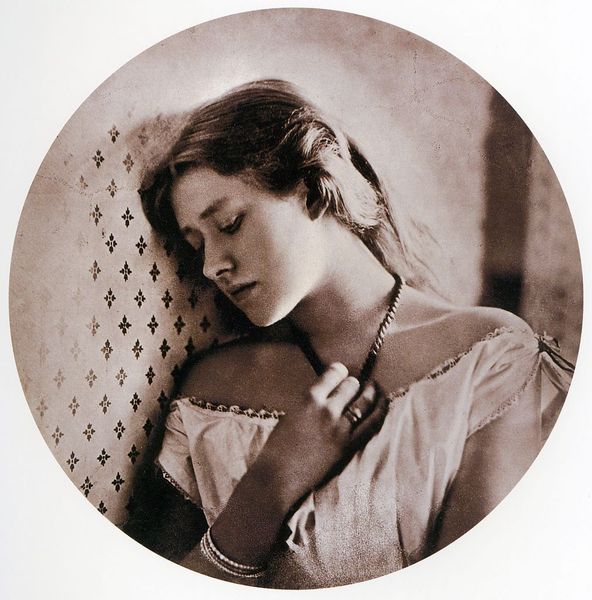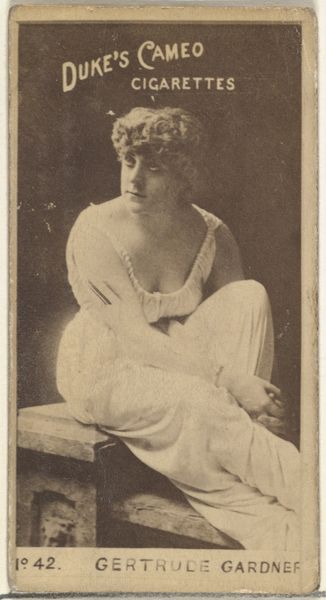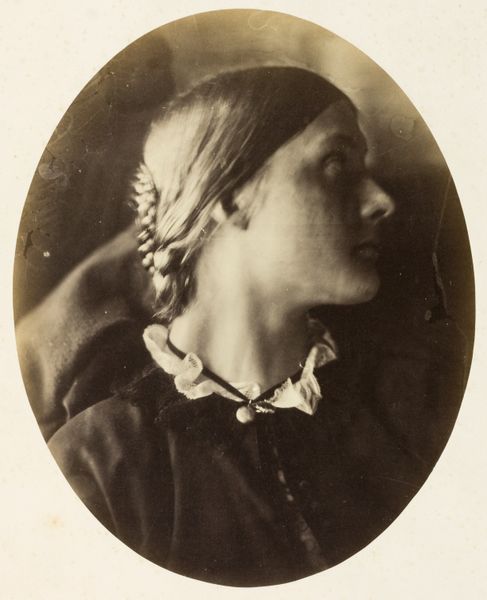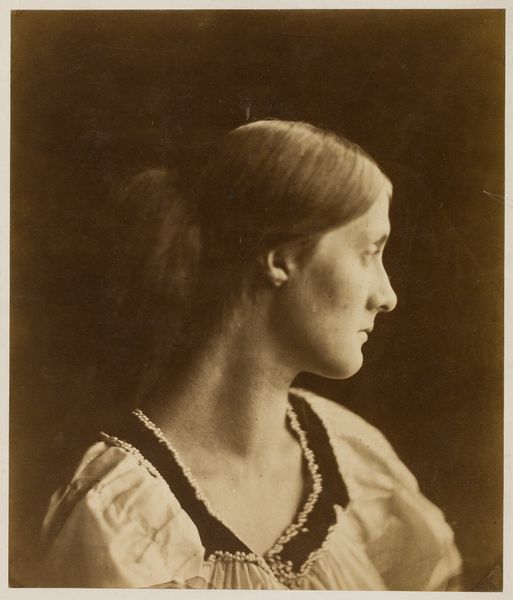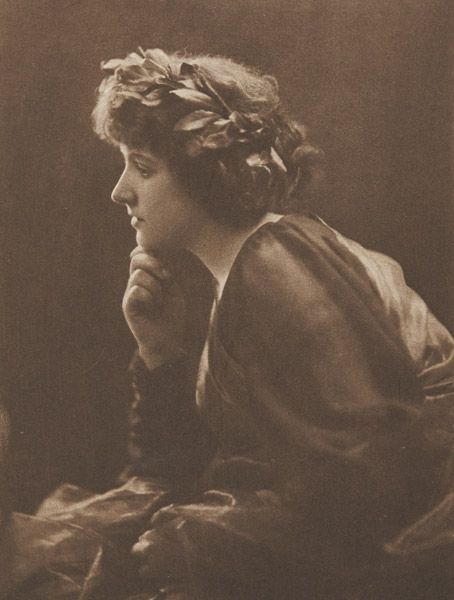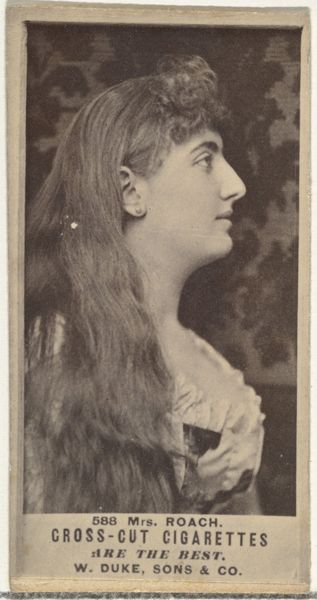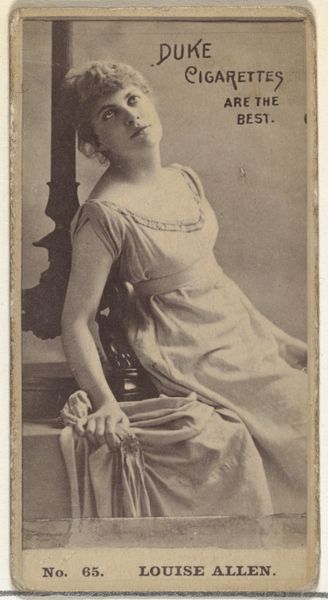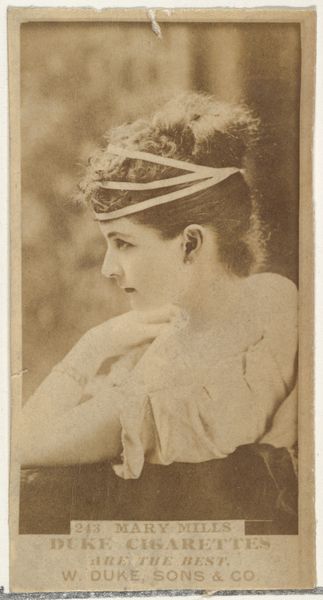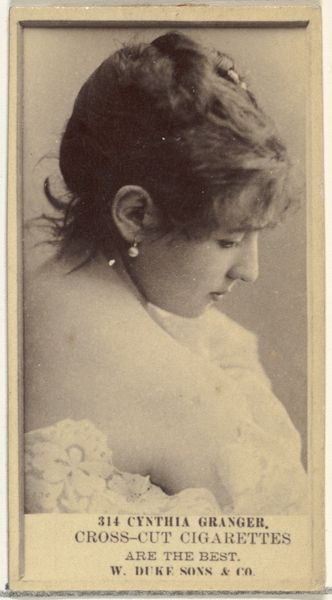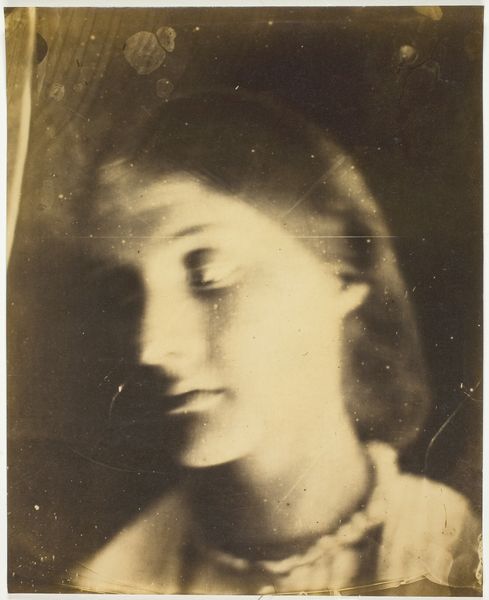
Copyright: No Copyright - United States
Julia Margaret Cameron made this portrait of the actress Ellen Terry in England during the 1860s or 70s, using the wet collodion process to create a soft, intimate image. Cameron was part of a cultural circle that believed photography could be elevated to the status of high art, much like painting or sculpture. In Victorian England, the art world was still heavily influenced by the Royal Academy, which promoted very specific styles and subjects. Cameron and her peers wanted to challenge this rigid hierarchy and show that photography could be just as expressive and meaningful. Notice how Cameron uses soft focus and dramatic lighting to create a sense of vulnerability and introspection in Ellen Terry. This was a departure from the sharp, clinical portraits that were common at the time. The theatricality of the image references Terry's own profession, and the aesthetics of Pre-Raphaelite painting. To fully understand this photograph, we can research the Victorian art world and the debates surrounding photography, the Pre-Raphaelite brotherhood, and the biographies of Cameron and Terry. The meaning of art is always contingent on its social and institutional context.
Comments
No comments
Be the first to comment and join the conversation on the ultimate creative platform.
